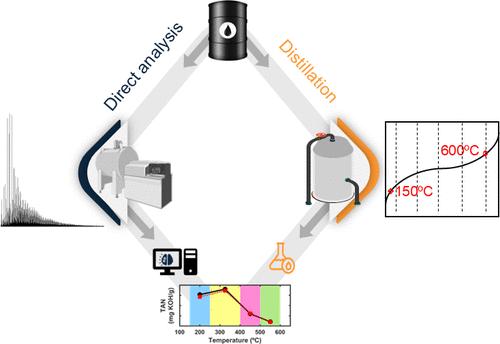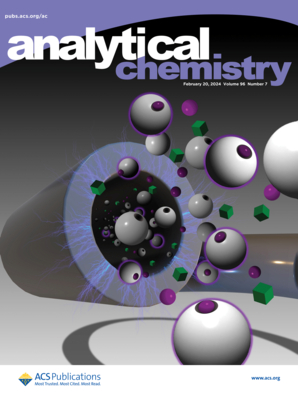Integrating FT-ICR MS and Machine Learning to Forecast Acid Content Across Boiling Cuts
IF 6.7
1区 化学
Q1 CHEMISTRY, ANALYTICAL
引用次数: 0
Abstract
In this study, we introduce a pioneering approach that leverages advanced machine learning and ultrahigh-resolution Fourier transform ion cyclotron mass spectrometry (FT-ICR MS) data to predict the distribution of the total acid number (TAN) in true boiling point (TBP) distillation cuts from crude oil. By employing partial least-squares (PLS) regression and ordered predictor selection (OPS), we achieved robust predictive models with high accuracy, evidenced by low root-mean-square error of calibration (RMSEC) and strong correlation coefficients (Rc). Our analysis of 36 diverse crude oil samples revealed significant variations in chemical composition, with nitrogen- and oxygen-containing compounds playing key roles in influencing TAN values. Through the use of volcano plots, we identified critical molecular classes that drive changes in TAN. The predictive models demonstrated remarkable consistency between predicted and actual TAN values, particularly in samples with a higher TAN, further validating their reliability. Significantly, our method overcomes the limitations of traditional ASTM testing by requiring smaller sample volumes while still providing accurate TAN predictions. This novel approach offers a powerful new tool for the molecular characterization and behavioral forecasting of complex mixtures, enabling a more efficient pathway for sample analysis when resources are limited.

求助全文
约1分钟内获得全文
求助全文
来源期刊

Analytical Chemistry
化学-分析化学
CiteScore
12.10
自引率
12.20%
发文量
1949
审稿时长
1.4 months
期刊介绍:
Analytical Chemistry, a peer-reviewed research journal, focuses on disseminating new and original knowledge across all branches of analytical chemistry. Fundamental articles may explore general principles of chemical measurement science and need not directly address existing or potential analytical methodology. They can be entirely theoretical or report experimental results. Contributions may cover various phases of analytical operations, including sampling, bioanalysis, electrochemistry, mass spectrometry, microscale and nanoscale systems, environmental analysis, separations, spectroscopy, chemical reactions and selectivity, instrumentation, imaging, surface analysis, and data processing. Papers discussing known analytical methods should present a significant, original application of the method, a notable improvement, or results on an important analyte.
 求助内容:
求助内容: 应助结果提醒方式:
应助结果提醒方式:


